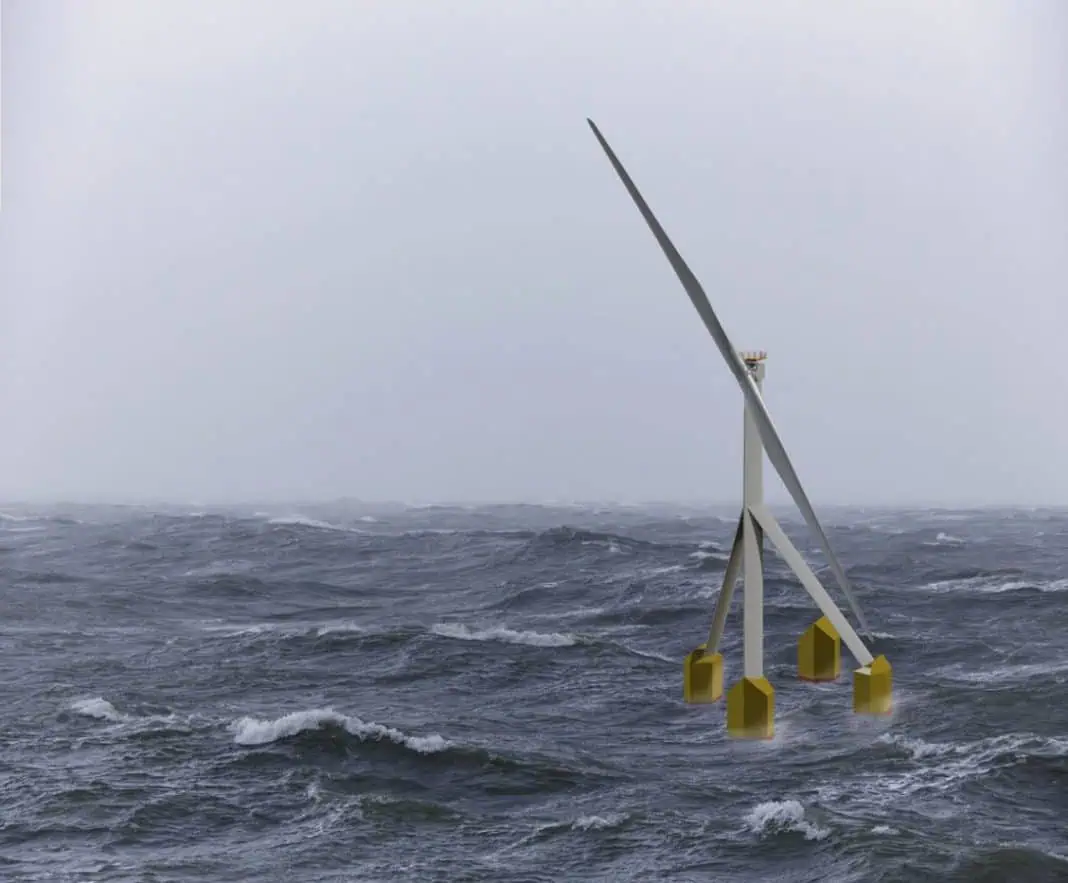Within the framework of the BMWi joint research project HyStOH, the SelfAligner concept for a floating wind turbine was investigated and optimized by the Hamburg University of Technology (TUHH). The investigations were carried out in cooperation with scientific and industrial partners. A special feature of the turbine is its passive wind tracking system, with which the entire platform is able to align itself in the wind. For this purpose, the platform is anchored by a turret buoy that allows the entire platform to rotate freely around the mooring point. In addition to the rotor, an airfoil-shaped tower provides the necessary forces for alignment in the wind.
The nacelle of the wind turbine is mounted directly on the tower since no yaw bearing is required to turn the rotor. The rotor is arranged downwind behind the tower. Due to the aerodynamic shape of the tower, its wind wake is reduced, which has a positive effect on the dynamic load on the rotor blades. Thus, the blades experience a significantly lower impact load as they pass the tower.
The platform is characterized by a cost-effective, lightweight construction that can be produced at conventional shipyards without modifications to production facilities. Compared to fixed-bottom structures (including monopiles), the environmental impact of the installation is much lower, since only mooring cables are attached to the seabed.
This novel concept was developed within the BMWi joint research project HyStOH. The project partners are CRUSE Offshore GmbH, the Technical University of Hamburg with the Institute for Fluid Dynamics and Ship Theory and the Institute for Ship Structural Design and Analysis, DNV GL, aerodyn GmbH, and Jörss-Blunck-Ordemann GmbH.
The Institute for Fluid Dynamics and Ship Theory used their in-house method, panMARE, to analyze the motion behavior. For this purpose, new methods for determining the forces induced by the mooring lines and for calculating the rigid body accelerations were implemented. The results were used to optimize both the geometry of the platform and the arrangement of the tower in order to achieve the best possible wind alignment.













